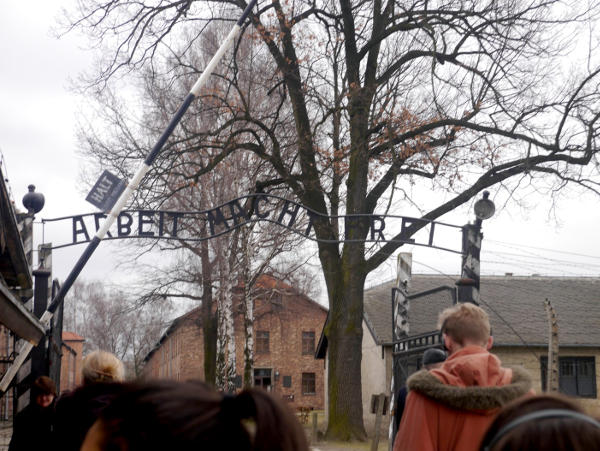
In March 2014 teenager Katie visited the former Nazi death camp at Auschwitz. She told her story in Christ Church on Holocaust Memorial Day.
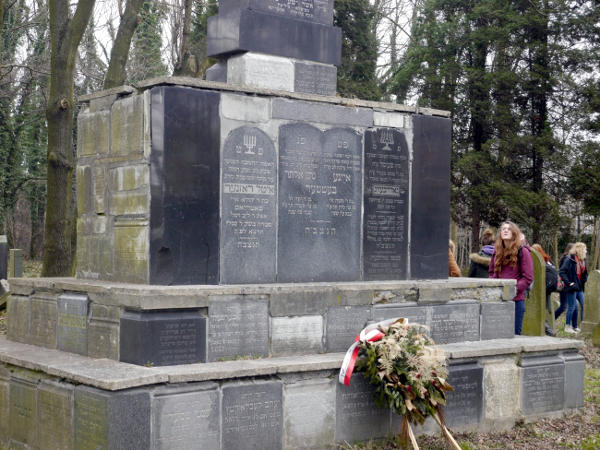
The Jewish cemetery at Oświęcim (Auschwitz)
On the 5th March 2014, my friend Anna and I were given the opportunity to visit Poland on a one-day trip as part of the Holocaust Educational Trust “Lessons from Auschwitz” programme.
This involved a seminar before we went in order to hear a Holocaust survivor speak and to discuss our thoughts with a group leader about what we expected on the day, in both a physical and emotional sense. Next came the one day trip and we also had a follow-up seminar afterwards discussing what we had experienced.
On the day that we visited Poland, we had to be at the airport in time for a 7am flight, and we landed in Poland at around 9:30am, local time. Firstly, we went to a Jewish cemetery in Oświęcim, which the Nazis renamed Auschwitz during the War.
This in itself was really interesting and moving due to the knowledge of Judaism which Anna and I have amassed as part of our GCSE and AS-level Religious Studies and seeing the cemetery allowed us to see first-hand many of the beliefs that the Jews have about death and life after death and also see the practices which Jews have to remember the dead, such as placing stones rather than flowers on a gravestone, because pebbles last forever and it is easy for anyone to pick up a pebble and place it on a gravestone.
There is a large memorial at the cemetery with the remaining gravestones which the Jewish community could not place in the graveyard due to lack of knowledge about where it had come from.
The gravestones at the cemetery were taken away and smashed during the war and spread throughout Poland and the surrounding countries. After the war, the Jews in the town worked hard to try and collect the gravestones and bring them back to this site. There is only one body buried in the cemetery now, the last Jew to be living in the town who died in the year 2000. Many Jews left the town after the war and those that remained passed away slowly meaning there is no longer a Jewish presence in the town of Oświęcim.
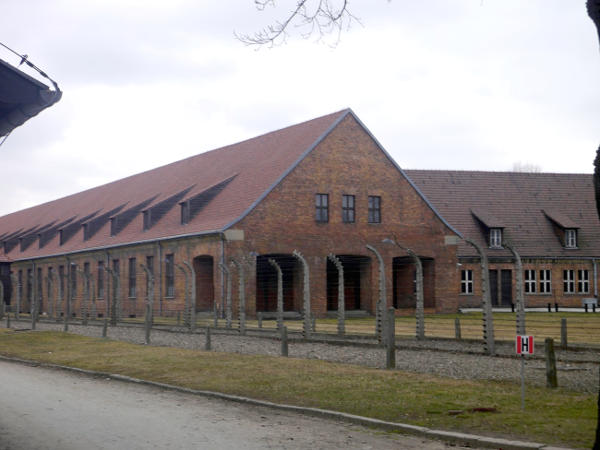
Barracks at Auschwitz I

The notorious slogan of the death camps: “Arbeit macht frei” (Work will set you free)
After visiting the cemetery, we were taken to Auschwitz I, the Polish army camp taken over by the Nazis in order to use as a work camp. Auschwitz as a whole is the biggest extermination camp, with three parts: Auschwitz I, Auschwitz II (Birkenau) and Auschwitz III (Monowitz).
The sign above the camp entrance, meaning ‘Work will set you free’, which remains from the War serves now both as a sign that was there during the war and as a reminder of what happened at the camp, where many prisoners were worked to death during their time there. This was first used to hold Polish political prisoners, although by the March 1941 there were 10,900 prisoners in the camp, who came from all over Europe.
We also saw the tallits, which are Jewish prayer shawls worn in the Orthodox tradition by men over the age of Bar Mitzvah (age 13), when they officially take on all the adult responsibilities of the faith. There are watchtowers all around the boundary to the camp.
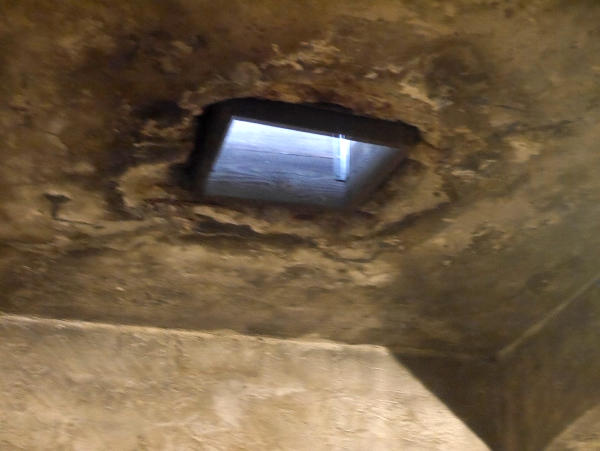
A gas chamber at Auschwitz I
We were toured around the camp by a professional tour guide and during the two hours that we were there, we visited many of the buildings and saw other memorials such as the extermination wall, where groups of people were lined up and shot at by the Nazis in order to kill them. Our visit to Auschwitz I also involved seeing the gas chambers, the smallest of which could exterminate over 500 people at once. Zyklon B was the gas used at the camps.
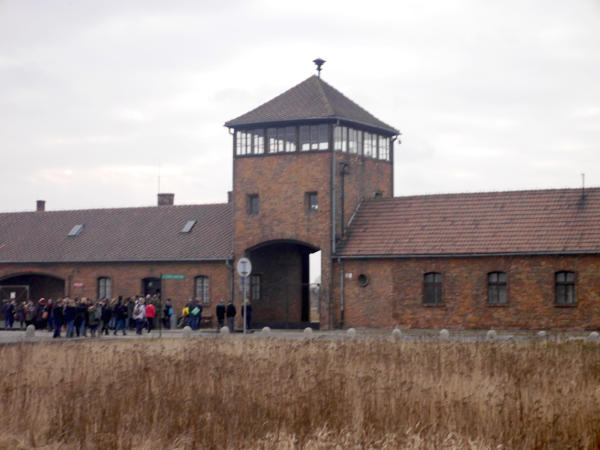
Auschwitz II (Birkenau)

Cattle wagon at Auschwitz II
After our tour finished at Auschwitz I, we were taken to Auschwitz II, which is also known as Auschwitz-Birkenau. This camp was purpose-built in order to house prisoners, and is perhaps the most widely recognised camp. We were able to go up the iconic watchtower at the entrance to the camp and this gave us a view of what the Nazi commanders would have seen as trains entered and exited the camp daily carrying prisoners ready for selection, as well as being able to see the barracks where the prisoners lived. We were shocked at the pure size and scale of the camp.
There is a cattle wagon from the time still on the tracks which we saw, although we could not go inside it.
We were then taken around the camp (again by trained tour guides) and this involved seeing the blown up crematoria where the Sonderkommando tried to stage an uprising in October 1944.
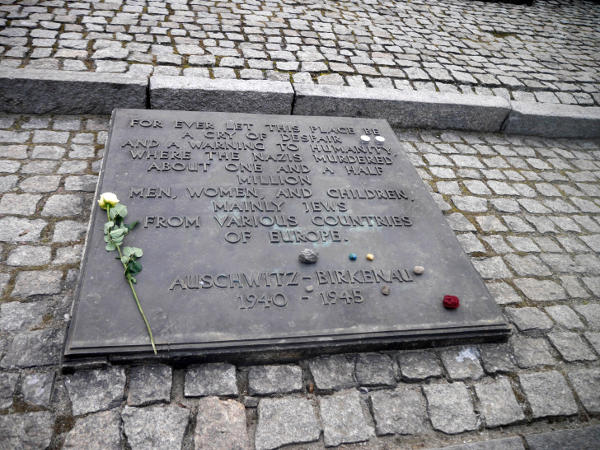
Memorial at Auschwitz II
We also saw the memorial in the camp which is surrounded by a cobbled floor, which is important as every cobble represents one person who died in the camp.
At the end of the tour, the Rabbi from the Central Synagogue, London led a short memorial service remembering those who died in the camps during the War. We then placed candles on and around the tracks to remember those who died.
Although it was an extremely intense day (mentally, spiritually and physically), I think that being given the opportunity to go on this course was an amazing experience, because it allowed me to visualise what happened during the war and remember those people who died at the hands of Hitler and the other Nazi leaders.
This is a fragment of a letter found buried near the third crematorium, written by a member of the Sonderkommando, Salmen Gradowski. The Sonderkommando were chosen at selection to have a special work detail. Here is part of his letter:
Dear reader
I write these words in the moments of my greatest despair. I do not know, I do not believe, that I will live to read these lines “after the storm”. Who knows if I will ever again behold a “free man” and be able to speak with him? It may be that these lines that I am now writing will be the sole witnesses to what was my life. But I shall be happy if only my writings should reach you, citizens of the free world.
I have a request of you: this is the real reason why I write, that my doomed life may attain some meaning… I pass on to you only a small part of what took place in the hell of Birkenau-Auschwitz. It is for you to comprehend the reality… and from these fragments, you will be able to construct a picture of how our people were killed.
He left another letter, which has been preserved in full and was also found buried. It gives details of life at Auschwitz.
I was writing this at a time when I was in the Sonderkommando. I wanted to leave this as also other numerous notes as a memento for the future world of peace, so that it may learn what happened here. I have buried this under the ashes, deeming it the safest place, where people will certainly dig to find the traces of millions of men who were exterminated.
But lately they have begun obliterating the traces and everywhere, where there was much ash, they ordered to have it be ground fine and to cart it away to the Vistula and to let it flow with the current. We have dug up many graves and now two such open graves are in the terrain of the second and third crematorium. Several graves are still full of ashes. Perhaps they had forgotten about them or they themselves had maybe concealed it from the higher authorities, why, the order was: to obliterate all traces as quickly as possible so, by not carrying out that order they desisted from it.
Thanks to that, there are still two large graves in the terrain of the second and third crematorium. Masses of ashes [from burnt corpses] of hundreds of Jews, Russians, Poles, were strewn and ploughed in on the sites of the crematoria. In the area of the fourth and fifth crematoria there are also small quantities of ash. There it was at once ground and taken to the Vistula, because it was designated for “burning the bridges”.
The notebook and other notes have lain in the graves, getting saturated with the blood of not always entirely burnt bones and pieces of flesh. One can recognise the odour at once.
Dear finder, search everywhere, in every inch of soil. Tens of documents are buried under it, mine and other persons, which will throw light on everything that was happening here. Great quantities of teeth are also buried here. It was we, the Kommando workers, who expressly have strewn them all over the terrain, as many as we could, so that the world should find material traces of the millions of murdered people. We ourselves have lost hope or being able to live to see the moment of liberation. In spite of good news that reaches us, we see that the world gives the barbarians the opportunity of destruction on an immense scale and of tearing out the roots of the last reminder of the Jewish nation. Under our eyes tens of thousands of Jews from the Czech and Slovakian regions are now perishing. Those Jews could certainly have lived to see freedom. But everywhere where danger approaches the barbarians, from every place where they have to leave, they take the remnants of the Jews still alive and bring them to Birkenau-Auschwitz or to Gdansk. This is known thanks to the reports of persons who had come from there to us, too.
We, the Sonderkommando, have long since wanted to put a stop to the horrible work which we were forced to do under the threat of death. We wanted to do great things. But people from the camp, a section of the Jews, Russians and Poles, have restrained us with all might and forced us to put off the date of the mutiny. That day is approaching. It may happen today or tomorrow. I am writing these words in a moment of the greatest danger and excitement. May the future judge us on the basis of my notes and may the world see in them, if only one drop, the minimum, of this tragic world amidst which we had lived.
6 September 1944.
The uprising took place a month after this on the 6 October 1944 and Gradowski was one of the leaders of the uprising. He was killed by the Nazis for his role.
Find out more about community links on our Community Action page.








